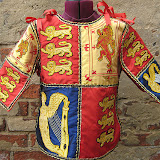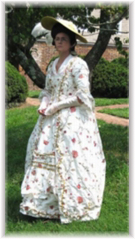
It is really difficult to describe a shade. Let's take these 'stays'. Teal? Petrol? Powder? Bright? Baby? All these descriptions are subjective and it depends on which part you are looking at! I've worked with colour for roughly thirty years and I still wouldn't count on trying to memorize one. A picture would help - but even that has its limitations as printers still have difficulty duplicating shades and printing onto different mediums. Computer monitors are even worse at portraying what you want to show, using CYMK, RGB, etc is O.K, but when different monitors are not set the same, you are back to square one. Where you put things, ( RED or BLUE), can make it even worse!
In the past, 'Rich' colours meant exactly what it said. You were wealthy enough to have the cloth put twice through the dye bath OR had enough to afford expensive dyes. Presuming, of course, that you could ignore 'sumptuary laws', which were enforced in certain periods of history. What we call 'Sad' shades were worn by the poorer sections of society and were usually duller and more easily available from local sources. How people went on the past with dyes, pigments and paint is still a subject of much debate, conjecture and experimentation. I tell you all this because Jorge has revived his blog on medieval colour & painting here. and his web album is here. Both, well worth a visit.
His lovely work, I think, helps to prove that the world in past times wasn't quite as dull as some people imagine.







